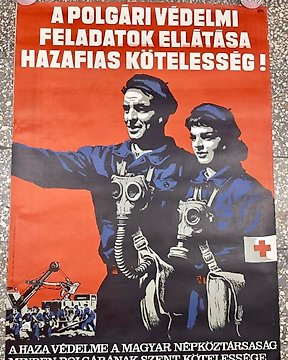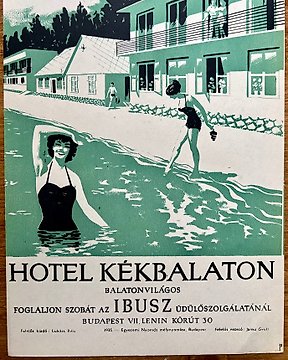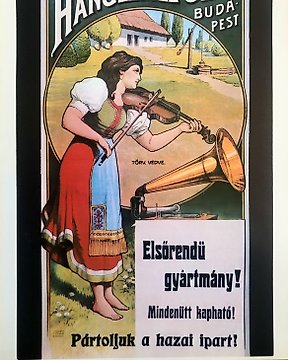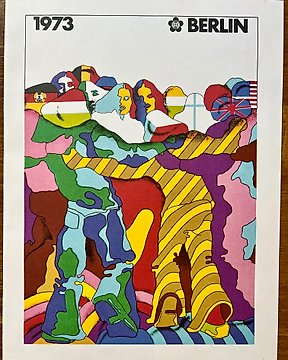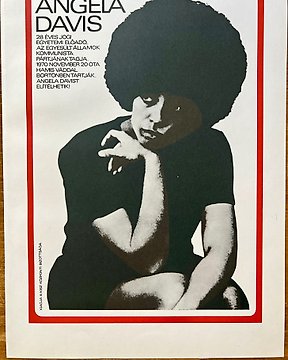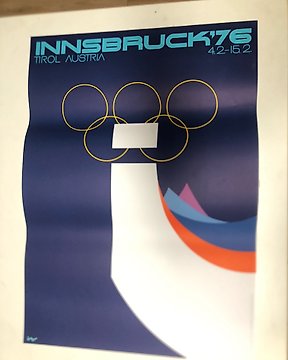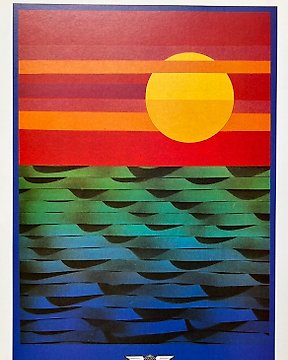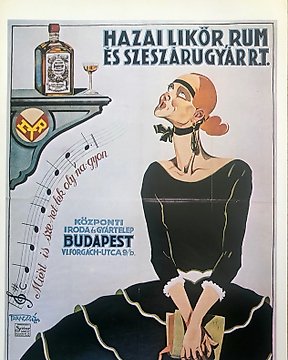
Géza Faragó - Janina cigarette case tobacco smoking - Budapest, Hungary - Années 1970
Catawiki met continuellement à jour ses moyens techniques. La version de navigateur que vous utilisez actuellement est obsolète. Pour avoir la meilleure navigation possible, veuillez mettre à jour votre navigateur.
Vous pouvez définir vos préférences en matière de cookies en utilisant les boutons ci-dessous. Vous pouvez mettre à jour vos préférences, retirer votre consentement à tout moment, et voir une description détaillée des types de cookies que nos partenaires et nous-mêmes utilisons dans notre Politique en matière de cookies .
Nº 82299345
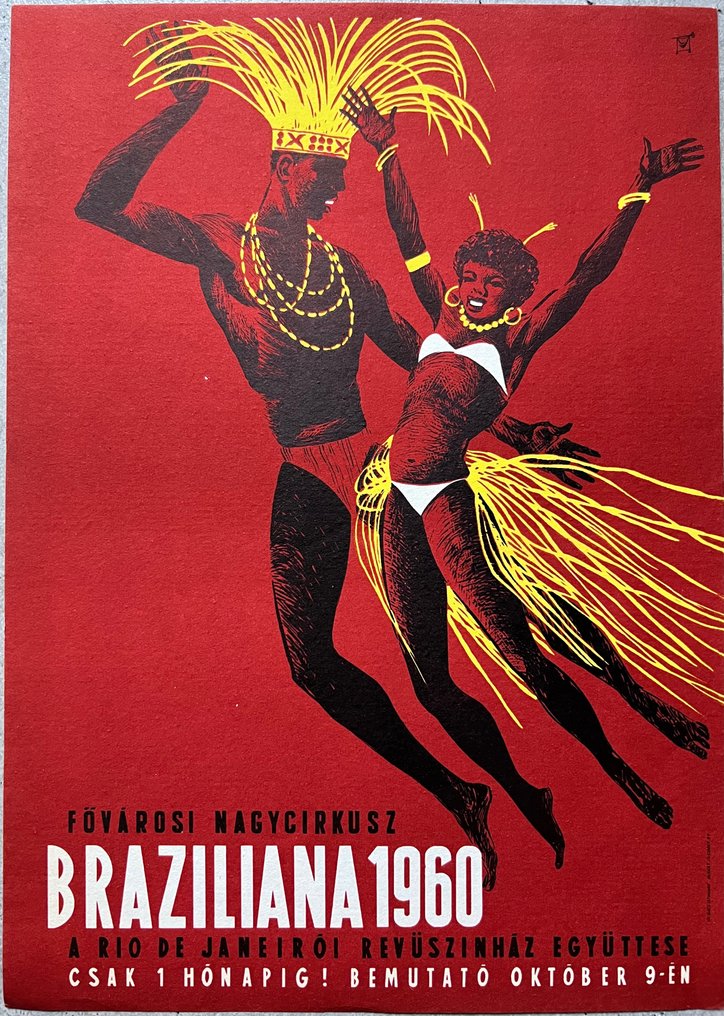
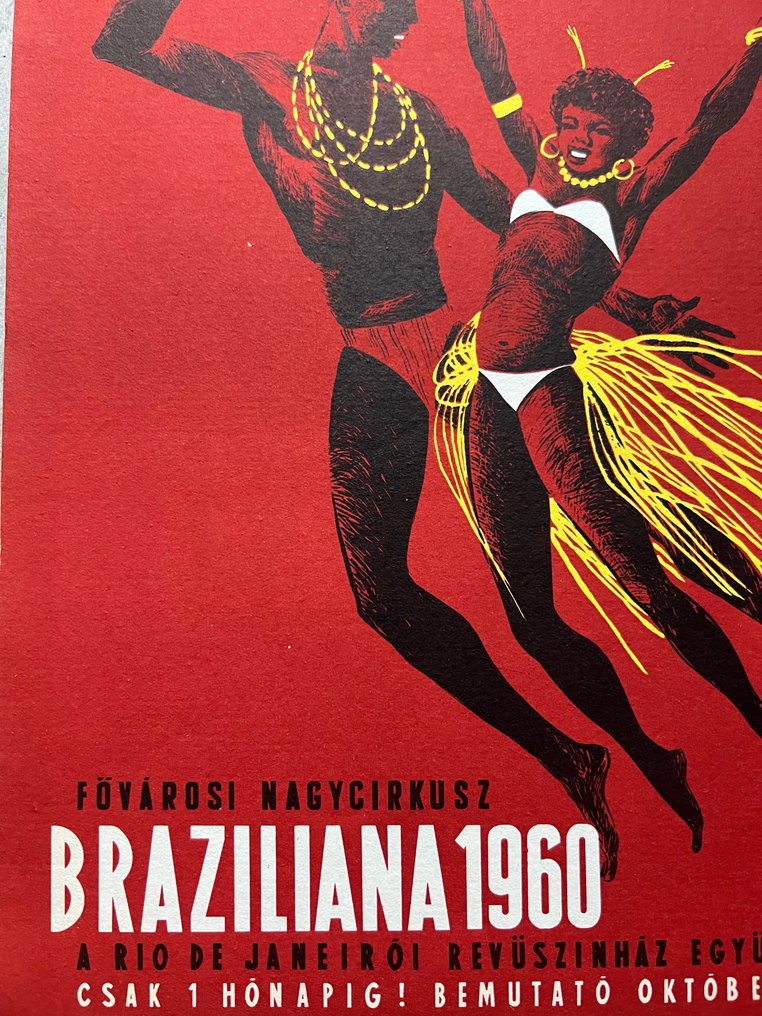

Tram poster is a rarity genre in the devlopment of poster art. It was mostly wide spread in Hungary and also, but less frequently, in other Center/Easter European countries before the collapse of the Soviet Union where tram as public transport was commonly used by citizens in cities.
Budapest Central Circus poster 100% original
The tram posters are true personalities: sort of English ladies among the advertising spaces. This small advertising type spread from Germany in the 1920s and soon became a constant feature on Budapest trams as well. Inspired by a German example, a separate space was created inside the tram cars for their placement, on the inclined surfaces between the windows and the ceiling.
Alongside various commercial messages, educational topics often found their place, drawing attention to civilized or safe travel practices, especially needed in the post-war period due to overcrowded, poorly maintained trains, and undisciplined passengers leading to many accidents.
Benkő Sándor
1922 - 2007
Sándor Benkő was a great master of Hungarian poster art. He produced most of his designs from the early 1960s until the late 1980s. He specialised in circus poster design, of which he is most famous for. His cheerful and expressive style was also well suited for movie and theatre posters.
In 1940-1941, he received private training from István Örkényi Strasszer, János Rozs and Ernő József Deutsch. Between 1947 and 1955, Benkő worked in the studio of László Muskovszky. After 1955, he became an independent designer, creating illustrations for important publishing houses, slide films, demonstration boards for the army, and graphic designs for fairs and exhibitions.
In Benkő’s oeuvre, his very unique, playful and sometimes almost grotesque circus and films posters stand out. Benkő started his career at the end of the 1950’s when he adopted the dominant expressive tendency: designs built upon the effects of contrast and rhythm. He discovered the paper cut technique, which he expertly used with painting and drawing. For a short while, Pop Art had an effect on his work, which can be seen mostly in his choice of colors.
In the 1960’s, Benkő found his unique voice and his favorite topic: the circus. He designed a huge number of circus posters for two decades. This special world of the circus, with its colourful and playful atmosphere, is vividly invoked by Benkő. He used colourful paper cuts and brilliant drawing; he also had a special talent for typography, as his letters perfectly matched the topic. The characteristic figures of the circus are always present in his posters: animals, artists, clowns, etc. Most of Benkő’s posters represent the most curious and unbelievable specimen of the show. Benkő consciously used elements from the everyday visual culture on his posters. While he received inspiration from the filthy and vulgar visual world of circuses, markets, kiosks, and fan parks, Benkő always achieved a high artistic level.
—
About Hungarian Poster Art
Hungarian poster art has long been celebrated for its unique and captivating style, making it a significant cultural and artistic movement in the world. From the late 19th century to the present day, Hungarian poster art has left an indelible mark on the global art scene, with its innovative techniques, bold designs, and powerful messages.
One of the highlights of Hungarian poster art is its ability to seamlessly blend various artistic styles and influences. The movement drew inspiration from a wide range of sources, including Art Nouveau, Constructivism, and Surrealism, resulting in a diverse and eclectic body of work. Artists such as Mihály Bíró, József Bottlik, and István Irsai pushed the boundaries of traditional poster design, experimenting with typography, color, and composition to create visually striking and thought-provoking pieces.
Another notable aspect of Hungarian poster art is its emphasis on storytelling and narrative. Unlike many other countries' posters, which primarily served as advertising tools, Hungarian posters often conveyed a deeper meaning or social commentary. They were not just meant to sell products but also to engage viewers intellectually and emotionally. This storytelling approach allowed Hungarian poster art to transcend its commercial purpose and become a powerful medium for social and political expression.
The importance of Hungarian poster art in the world cannot be overstated. During the early 20th century, Hungary was at the forefront of graphic design, and its posters gained international recognition and acclaim. The Budapest School, a group of Hungarian artists, revolutionized the field with their avant-garde approach, influencing poster art movements across Europe and beyond. Their innovative techniques and artistic vision set new standards for poster design, inspiring generations of artists worldwide.
Furthermore, Hungarian poster art played a crucial role in shaping public opinion and mobilizing society. In times of political turmoil and social change, posters became a powerful tool for propaganda and activism. During World War II and the Hungarian Revolution of 1956, posters were used to rally support, convey messages of resistance, and document historical events. The ability of Hungarian artists to capture the spirit of the times and communicate complex ideas through visual imagery made their posters an integral part of the nation's cultural and political identity.
Today, Hungarian poster art continues to thrive, with contemporary artists carrying on the legacy of their predecessors. The Hungarian Poster Museum in Budapest showcases the rich history and evolution of this art form, attracting visitors from around the world. The enduring appeal and influence of Hungarian poster art can be seen in the works of renowned artists like Tibor Helényi and István Orosz, who have successfully merged traditional techniques with modern aesthetics.
In conclusion, Hungarian poster art stands as a testament to the country's artistic prowess and cultural heritage. Its unique style, emphasis on storytelling, and ability to provoke thought and emotion have made it an important and influential movement in the world. From its early beginnings to the present day, Hungarian poster art continues to captivate audiences and inspire artists, leaving an indelible mark on the global art scene.
—
Please note that our company was founded in 1994 and it is internationally trackable. Invoice is available upon request.
Our team consists of members with university degree of art, painting valuation experts and experienced art&antique dealers
Feel free to ask as much as you want. Lifetime warranty is available for all items originality.
Shipping is with insurance.
Tram poster is a rarity genre in the devlopment of poster art. It was mostly wide spread in Hungary and also, but less frequently, in other Center/Easter European countries before the collapse of the Soviet Union where tram as public transport was commonly used by citizens in cities.
Budapest Central Circus poster 100% original
The tram posters are true personalities: sort of English ladies among the advertising spaces. This small advertising type spread from Germany in the 1920s and soon became a constant feature on Budapest trams as well. Inspired by a German example, a separate space was created inside the tram cars for their placement, on the inclined surfaces between the windows and the ceiling.
Alongside various commercial messages, educational topics often found their place, drawing attention to civilized or safe travel practices, especially needed in the post-war period due to overcrowded, poorly maintained trains, and undisciplined passengers leading to many accidents.
Benkő Sándor
1922 - 2007
Sándor Benkő was a great master of Hungarian poster art. He produced most of his designs from the early 1960s until the late 1980s. He specialised in circus poster design, of which he is most famous for. His cheerful and expressive style was also well suited for movie and theatre posters.
In 1940-1941, he received private training from István Örkényi Strasszer, János Rozs and Ernő József Deutsch. Between 1947 and 1955, Benkő worked in the studio of László Muskovszky. After 1955, he became an independent designer, creating illustrations for important publishing houses, slide films, demonstration boards for the army, and graphic designs for fairs and exhibitions.
In Benkő’s oeuvre, his very unique, playful and sometimes almost grotesque circus and films posters stand out. Benkő started his career at the end of the 1950’s when he adopted the dominant expressive tendency: designs built upon the effects of contrast and rhythm. He discovered the paper cut technique, which he expertly used with painting and drawing. For a short while, Pop Art had an effect on his work, which can be seen mostly in his choice of colors.
In the 1960’s, Benkő found his unique voice and his favorite topic: the circus. He designed a huge number of circus posters for two decades. This special world of the circus, with its colourful and playful atmosphere, is vividly invoked by Benkő. He used colourful paper cuts and brilliant drawing; he also had a special talent for typography, as his letters perfectly matched the topic. The characteristic figures of the circus are always present in his posters: animals, artists, clowns, etc. Most of Benkő’s posters represent the most curious and unbelievable specimen of the show. Benkő consciously used elements from the everyday visual culture on his posters. While he received inspiration from the filthy and vulgar visual world of circuses, markets, kiosks, and fan parks, Benkő always achieved a high artistic level.
—
About Hungarian Poster Art
Hungarian poster art has long been celebrated for its unique and captivating style, making it a significant cultural and artistic movement in the world. From the late 19th century to the present day, Hungarian poster art has left an indelible mark on the global art scene, with its innovative techniques, bold designs, and powerful messages.
One of the highlights of Hungarian poster art is its ability to seamlessly blend various artistic styles and influences. The movement drew inspiration from a wide range of sources, including Art Nouveau, Constructivism, and Surrealism, resulting in a diverse and eclectic body of work. Artists such as Mihály Bíró, József Bottlik, and István Irsai pushed the boundaries of traditional poster design, experimenting with typography, color, and composition to create visually striking and thought-provoking pieces.
Another notable aspect of Hungarian poster art is its emphasis on storytelling and narrative. Unlike many other countries' posters, which primarily served as advertising tools, Hungarian posters often conveyed a deeper meaning or social commentary. They were not just meant to sell products but also to engage viewers intellectually and emotionally. This storytelling approach allowed Hungarian poster art to transcend its commercial purpose and become a powerful medium for social and political expression.
The importance of Hungarian poster art in the world cannot be overstated. During the early 20th century, Hungary was at the forefront of graphic design, and its posters gained international recognition and acclaim. The Budapest School, a group of Hungarian artists, revolutionized the field with their avant-garde approach, influencing poster art movements across Europe and beyond. Their innovative techniques and artistic vision set new standards for poster design, inspiring generations of artists worldwide.
Furthermore, Hungarian poster art played a crucial role in shaping public opinion and mobilizing society. In times of political turmoil and social change, posters became a powerful tool for propaganda and activism. During World War II and the Hungarian Revolution of 1956, posters were used to rally support, convey messages of resistance, and document historical events. The ability of Hungarian artists to capture the spirit of the times and communicate complex ideas through visual imagery made their posters an integral part of the nation's cultural and political identity.
Today, Hungarian poster art continues to thrive, with contemporary artists carrying on the legacy of their predecessors. The Hungarian Poster Museum in Budapest showcases the rich history and evolution of this art form, attracting visitors from around the world. The enduring appeal and influence of Hungarian poster art can be seen in the works of renowned artists like Tibor Helényi and István Orosz, who have successfully merged traditional techniques with modern aesthetics.
In conclusion, Hungarian poster art stands as a testament to the country's artistic prowess and cultural heritage. Its unique style, emphasis on storytelling, and ability to provoke thought and emotion have made it an important and influential movement in the world. From its early beginnings to the present day, Hungarian poster art continues to captivate audiences and inspire artists, leaving an indelible mark on the global art scene.
—
Please note that our company was founded in 1994 and it is internationally trackable. Invoice is available upon request.
Our team consists of members with university degree of art, painting valuation experts and experienced art&antique dealers
Feel free to ask as much as you want. Lifetime warranty is available for all items originality.
Shipping is with insurance.

